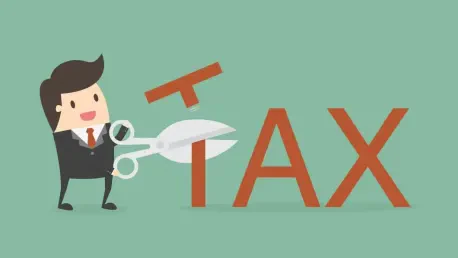Introduction
Florida stands at a critical juncture with a proposed $18.3 billion annual tax cut that aims to repeal homestead property taxes, a move touted as monumental relief for homeowners, sparking intense debate among policymakers, economists, and residents alike. This staggering figure represents one of the largest structural changes to local government finance in the state’s history. The sheer scale of this policy shift raises pressing questions about its sustainability and broader implications. This FAQ article seeks to address the most critical concerns surrounding this proposal by exploring its potential impacts, challenges, and unanswered questions. Readers can expect to gain a comprehensive understanding of the financial risks, societal effects, and governance issues tied to this bold initiative, equipping them with the knowledge to form informed opinions on a policy that could reshape Florida’s future.
The discussion will delve into specific aspects of the tax cut, breaking down complex fiscal concepts into clear, accessible insights. By addressing key questions, the goal is to provide clarity on how this policy might affect local budgets, public services, and different segments of the population. Each section will offer context, possible outcomes, and supporting evidence to ensure a balanced perspective on a topic that demands careful scrutiny.
Key Questions or Topics
What Is the Proposed $18.3 Billion Tax Cut in Florida?
The centerpiece of this policy is the repeal of homestead property taxes, a measure designed to alleviate the tax burden on homeowners across Florida. This proposal, carrying an annual fiscal impact of $18.3 billion, targets a significant source of revenue for local governments, which rely heavily on property taxes to fund essential services. The intent behind this cut is to provide substantial financial relief to residents, particularly those with long-term stakes in their homes, amid rising costs of living.
Understanding the importance of this proposal requires recognizing the role of property taxes in local governance. These funds are critical for maintaining schools, public safety, and infrastructure, making the proposed repeal a high-stakes decision. Without a clear replacement for this revenue, the policy raises immediate concerns about how cities and counties will sustain their operations, prompting a deeper look into the planning—or lack thereof—behind this initiative.
Why Is There Concern About the Lack of a Detailed Plan?
A major point of contention is the absence of a concrete blueprint to support the tax cut’s implementation. Despite extensive public promotion, no fiscal models, spreadsheets, or detailed calculations have been presented to demonstrate how the repeal would work in practice. Critics argue that this lack of transparency and preparation could lead to severe financial missteps, as local governments face an estimated $18.3 billion annual deficit without a clear strategy to offset the loss.
This gap in planning is particularly alarming given the scale of the policy’s impact. The decision to veto a study that could have provided vital data further fuels skepticism, suggesting a reluctance to confront potential negative outcomes. Without rigorous analysis, the risk of destabilizing local budgets looms large, drawing comparisons to removing a critical structural element from a building without first assessing the consequences.
How Could This Tax Cut Affect Florida’s Fiscal Stability?
The fiscal implications of this proposal are daunting, with projections indicating significant state deficits in the coming years—$1.5 billion by 2027 and $6.6 billion by 2028. These figures, provided by the Revenue Estimating Conference, do not even account for potential behavioral changes, such as increased housing demand or Florida becoming a tax haven due to its lack of income tax and homestead protections. Such dynamics could exacerbate the financial strain on an already stretched budget.
Beyond immediate deficits, the long-term sustainability of state and local finances is at stake. If local governments cannot absorb the revenue shortfall, the state may need to step in with backfill funds, yet no clear source or duration for such support has been identified. This uncertainty raises the specter of a fiscal crisis, where short-term tax relief could lead to enduring budgetary challenges for future administrations.
Who Stands to Gain or Lose From This Policy?
On the surface, the repeal of homestead property taxes appears to benefit homeowners by reducing their tax obligations. However, a closer examination reveals a more complex picture, where the benefits are unevenly distributed. Renters, new homebuyers, and small businesses are likely to bear a heavier burden through increased rents, higher housing prices, and elevated commercial tax rates as local governments scramble to recoup lost revenue.
This inequitable shift in tax responsibility undermines the fairness of the system. As fees and millage rates rise to statutory limits, non-homesteaded residents could face disproportionate costs, creating a divide between those who benefit from the cut and those who do not. The policy’s design, lacking mechanisms to address these disparities, risks deepening economic inequality across Florida’s diverse population.
What Impact Might This Have on Public Services and Local Governance?
Public services stand to suffer significantly under the weight of an $18.3 billion revenue shortfall. Essential areas like public safety could see subtle but damaging cuts, such as reduced hiring in police departments, not due to lower crime rates but due to budget constraints. Special districts, including fire, hospital, and library systems, also face potential destabilization, with no clear indication of which services would be prioritized or preserved.
Local governance itself is at risk of being undermined as cities and counties grapple with diminished resources. The absence of a reliable state commitment to backfill lost revenue adds to the uncertainty, leaving municipalities to navigate uncharted financial territory. This could result in a patchwork of service reductions and fee increases, fundamentally altering the quality of life for residents across the state.
Are There More Pressing Issues That Should Take Priority?
Amid the focus on this tax cut, several critical challenges facing Florida—such as property insurance, housing affordability, prison systems, water quality, and workforce shortages—risk being sidelined. These issues demand urgent attention and resources, yet the push for a tax repeal, driven more by political rhetoric than substantiated planning, threatens to divert focus from these pressing needs. The timing of this policy proposal raises questions about misplaced priorities in state governance.
Addressing these underlying crises could provide more immediate and equitable benefits to Floridians than an untested tax cut. Legislative energy and public discourse might be better directed toward solutions that tackle systemic problems, ensuring a more stable foundation for the state’s future. The call for a shift in focus underscores the need to balance short-term political wins with long-term societal well-being.
Summary or Recap
This FAQ addresses the core concerns surrounding Florida’s proposed $18.3 billion tax cut through the repeal of homestead property taxes, highlighting the absence of a detailed plan as a fundamental flaw. Key insights include the potential fiscal instability, with projected deficits threatening state budgets, and the inequitable burden-shifting that could harm renters and businesses while benefiting only certain homeowners. The impact on public services and local governance emerges as a critical risk, with essential systems facing cuts due to revenue shortfalls.
Additionally, the discussion points to more urgent state issues that may deserve priority over this policy. The main takeaway is that without rigorous analysis and transparent planning, this tax cut poses a significant threat to Florida’s financial health and social equity. For those seeking deeper exploration, resources from state fiscal reports or analyses by independent policy institutes can provide further context on the broader implications of such sweeping reforms.
Conclusion or Final Thoughts
Looking back, the debate over Florida’s $18.3 billion tax cut revealed a policy fraught with risks, from fiscal instability to eroded public services, that demanded far greater scrutiny than was initially provided. The lack of a comprehensive plan stood as a glaring oversight, underscoring the importance of evidence-based governance in tackling such monumental changes. Reflecting on this, a path forward emerged in the form of legislative accountability—demanding detailed modeling and impact assessments before any action was taken.
Moving ahead, stakeholders were encouraged to prioritize collaborative solutions, engaging with fiscal experts and local leaders to craft policies that balanced tax relief with sustainable funding for essential services. A renewed focus on pressing state challenges, like housing and infrastructure, also offered a more grounded approach to improving Floridians’ lives. Readers were urged to consider how these fiscal decisions aligned with their own community’s needs, advocating for transparency and responsibility in shaping the state’s economic landscape.









